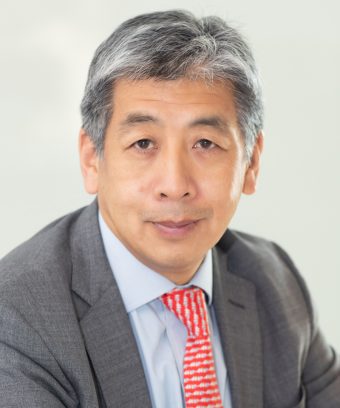Continuity and a Military Purge at China’s Fourth Communist Party Plenum
Last week, the Chinese Communist Party Central Committee met for its annual plenum and issued a communiqué outlining the 15th Five-Year Plan (FYP), which is due out next year and will set the course for the country’s economic, social, technological, and national security development from 2026 to 2030. Based on clues from the communiqué, much of the 15th FYP will be a continuation of the 14th FYP, setting a national focus on scientific and technological self-reliance, industrial upgrading in key industries, and defense modernization.
The continuity is not surprising. The Xi regime sees the current phase of the country’s development as covering a 15-year span from 2021 to 2035 and Xi has been remarkably consistent about his goals. At a symposium in August, he said that the next five years would be “a critical period for consolidating the foundations and making all-round efforts” for China to “achieve socialist modernization” by 2035.
The new plenum communiqué goes even further, declaring the 15th FYP an important stepping-stone in the goal to reach a per capita GDP “on a par with that of a mid-level developed country” by 2035, emphasizing that by then “China’s economic strength, science and technology capabilities, national defense capabilities, composite national strength, and international influence will all be markedly stronger.”
Science and Technology
The communiqué highlights several objectives of the 15th FYP. Among the top goals is to achieve greater self-reliance and strength in science and technology, an objective China has been working toward with growing urgency since the mid-2010s amid ever-tightening export restrictions from advanced Western countries. While the 14th FYP promoted indigenous innovation, the 15th FYP makes technological self-reliance and strength in science and technology the centerpiece of Chinese national competitiveness. This is accompanied by plans to reform the research and development system and attract global high-tech talent.
At a press conference after the release of the plenum communiqué, Science and Technology Minister Yin Hejun said that China would accelerate the implementation of major science and technology projects, promote strategically oriented basic research, and strengthen efforts to develop key common technologies, such as semiconductors, and advanced engineering technologies. He also emphasized the need to improve the coordinated development of national strategic science and technology capabilities—of which dual-use military-civil applications is a top priority—and to facilitate deeper integration between technological and industrial innovation.
Although the focus on science and technology precedes Trump’s second presidential term, Chinese leaders see an unprecedented opportunity to take advantage of the Trump administration’s abrupt pullback in supporting science and technology development. The American Association for the Advancement of Science estimates, for example, that proposed U.S. federal funding for science in the 2026 fiscal year will be 22 percent less than in the prior year. While the Trump administration assaults America’s science and research infrastructure, China is aggressively stepping up its research and development (R&D) spending, albeit from a low base. Between 2021 and 2024, Chinese R&D expenditures grew at an average annual rate of 10.5 percent. The Organization for Economic Cooperation and Development estimates that gross domestic expenditure on R&D in 2023 in the United States was $823 billion and $780 billion in China. If China maintains a near-double increase in its R&D spending in the 15th FYP as appears likely, it will leave the United States far behind in the spending stakes.
Economic Development
Another central objective of the 15th FYP will be to continue efforts to pursue a “high-quality” development model, which is meant to signify China’s shift away from a formerly big quantity, lower quality development model. Xi wants China to join the top tier of advanced economic and industrial countries by the mid-2030s, and he is pursuing this goal by fostering “new quality productive forces.” This approach emphasizes cutting-edge technological and industrial innovation, emerging and future-oriented industries, such as electric vehicles and robotic automation, and strengthening the resilience and security of industrial supply chains.
China has already shown tremendous innovative capacity in many of these sectors—for example China has become the dominant leader in electric vehicle production, accounting for 70 percent of global output since 2024.
Military Modernization
Military issues are usually brief and innocuous in Chinese communiqués and FYPs—but not this time. The communiqué indicates a growing sense of urgency among Chinese leaders to meet military objectives and of the importance of total political loyalty to the Party.
Strengthening military readiness and modernization is a longtime objective of Xi Jinping, which has become more acute amid the deteriorating security situation in the Taiwan Strait and intensifying competition with the United States. In the 14th FYP, the deadline for achieving unspecified elements of the modernization of the defense establishment was pushed forward, from 2035 to 2027—which is, not coincidentally, the 100th anniversary of the People’s Liberation Army (PLA). The communiqué said that the goals that have been set for the PLA in 2027 should be “achieved on schedule.”
The communiqué also highlights areas for accelerated development, especially hardware-related capabilities to support integrated military development (i.e., command, control, communications, computers, intelligence, surveillance and reconnaissance forces) and the application of smart technologies, such as drones and autonomous systems, as well as improving military governance and national strategic integration, which refers to an extensive integration of the civilian and defense economies. These added dimensions represent a new and improved approach to military-civil fusion.
Military Loyalty and a Dramatic Shakedown
The communiqué also stresses the utmost importance of military loyalty to the Party and cites “grave violations of Party discipline and state laws”—an ominous reminder of an extensive anti-corruption crackdown targeted at the PLA and affiliated defense industrial base since 2023, which has led to the arrest of several dozen top generals and heads of defense industrial corporations. This is one of the largest anti-corruption campaigns in the PLA’s history.
The communiqué announced the expulsion from the Party of an additional nine officers, including Gen. Hu Weidong, who, as deputy vice-chairman of the Central Military Commission (CMC), was the second highest-ranking officer in the PLA high command. Five of the nine named senior officers were high-ranking political commissars responsible for ensuring the PLA’s loyalty to the Party, headed by Gen. Miao Hua, the director of the CMC’s Political Work Department, who was one of the nine listed generals. Other political commissars arrested were Gen. He Hongjun, deputy director of the CMC Political Work Department; Gen. Qin Shutong, former political commissar of the PLA Ground Force; Gen. Yuan Huazhi, former political commissar of the PLA Navy; and Major-Gen. Zhang Fengzhong, director of the PLA Rocket Force Political Work Department. Other top ousted generals were Gen. Wang Xiubin, former executive deputy director of the CMC Joint Operations Command Center, which is headed by Xi; Gen. Lin Xiangyang, former commander of the Eastern Theater Command; and Gen. Wang Chunning: former commander of the People’s Armed Police Force, a paramilitary organization responsible for domestic security duties.
The political commissar apparatus was also a central target of Xi’s first anti-corruption crackdown in the PLA when he came to power in the early 2010s.
A few days before the plenum, a tough-talking editorial in the Liberation Army Daily, the PLA’s official newspaper, accused these generals of serious economic and political crimes. Although the editorial indicated that “an extremely large amount of money” was involved, the principal focus was on ideological and political criminality. The generals were accused of
“betraying their original mission and losing party principles, succumbing to ideological collapse and disloyalty, gravely betraying the trust of the Party Central Committee and the CMC, seriously undermining the principle that the party commands the gun and the CMC chairman responsibility system, gravely damaging the military’s political ecosystem, and severely shaking the ideological foundations of unity and progress across the ranks.”
Making this criminal behavior far more grave, the editorial said the cases were a “fermentation and mutation of the pernicious influence of Guo Boxiong and Xu Caihou,” two former CMC vice-chairmen in the Hu Jintao administration who were arrested shortly after Xi came to power for corruption and engaging in subversive political plots. Guo received a life sentence while Xu died while under investigation. This accusation in the military’s authoritative media mouthpiece points the official finger to these officers as having committed political crimes, which will almost certainly result in hefty sentences besides their expulsion from the Party.
The fiery political denouncement of these generals reveals a striking deficit of trust in the armed forces from Xi and the Communist Party leadership. It also raises questions about the “political work system,” a mechanism established by the Communist Party to monitor professional soldiers, ensuring they are loyal to the Party. Mao Zedong said it most concisely in his phrase “power comes out of the barrel of the gun”—therefore, the Party must always control the gun. The promotion of Gen. Zhang Shengmin, the head of the CMC Discipline Inspection Commission, to the CMC signals the rise of a new double parallel control system in which a powerful anti-corruption apparatus is added to monitor the professional warfighter-political commissar system. These machinations reveal a potentially fatal source of weakness for a military aspiring to become a world-class military power.
What’s Next?
Notwithstanding the intrigues occurring in the military domain, the overall message of the communiqué is about the continuation of an ambitious and high-octane approach to innovation and industrial policy to support China’s economic, technological, geo-strategic and military transformation. China’s aim is to be an undisputed comprehensive global power by the mid-2030s, if not earlier. Progress so far is striking.
The full details of the 15th FYP will be revealed by the end of this year and will be ratified officially at the National People’s Congress next spring. The next big event on China’s political calendar is the 21st Party Congress in 2027, which is when Xi Jinping will almost certainly win an unprecedented 4th term in power. The big question is whether and when a possible successor to Xi will emerge.
Tai Ming Cheung is the director of the University of California Institute on Global Conflict and Cooperation (IGCC) and a professor at the School of Global Policy and Strategy at UC San Diego.
Thumbnail credit: XC2000, Shutterstock.com

Global Policy At A Glance
Global Policy At A Glance is IGCC’s blog, which brings research from our network of scholars to engaged audiences outside of academia.
Read More